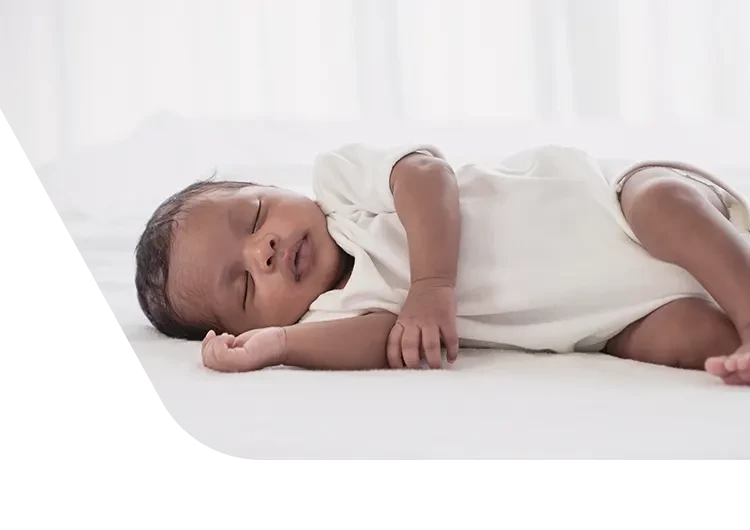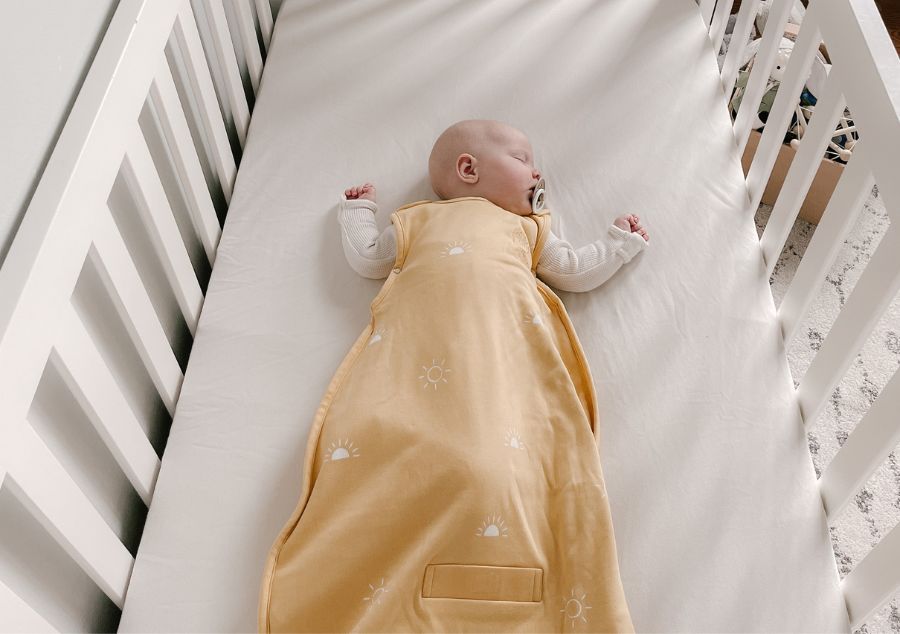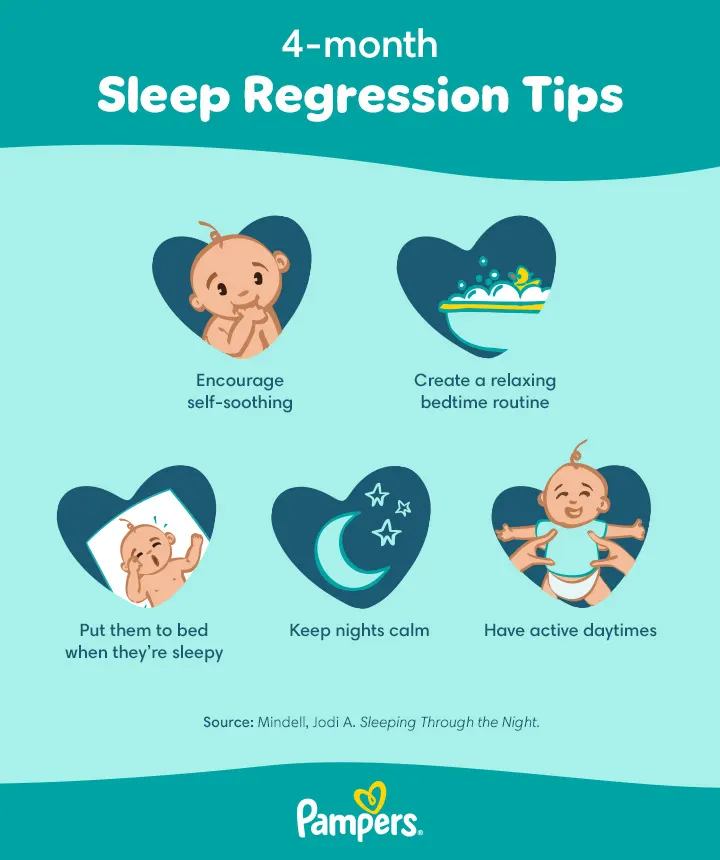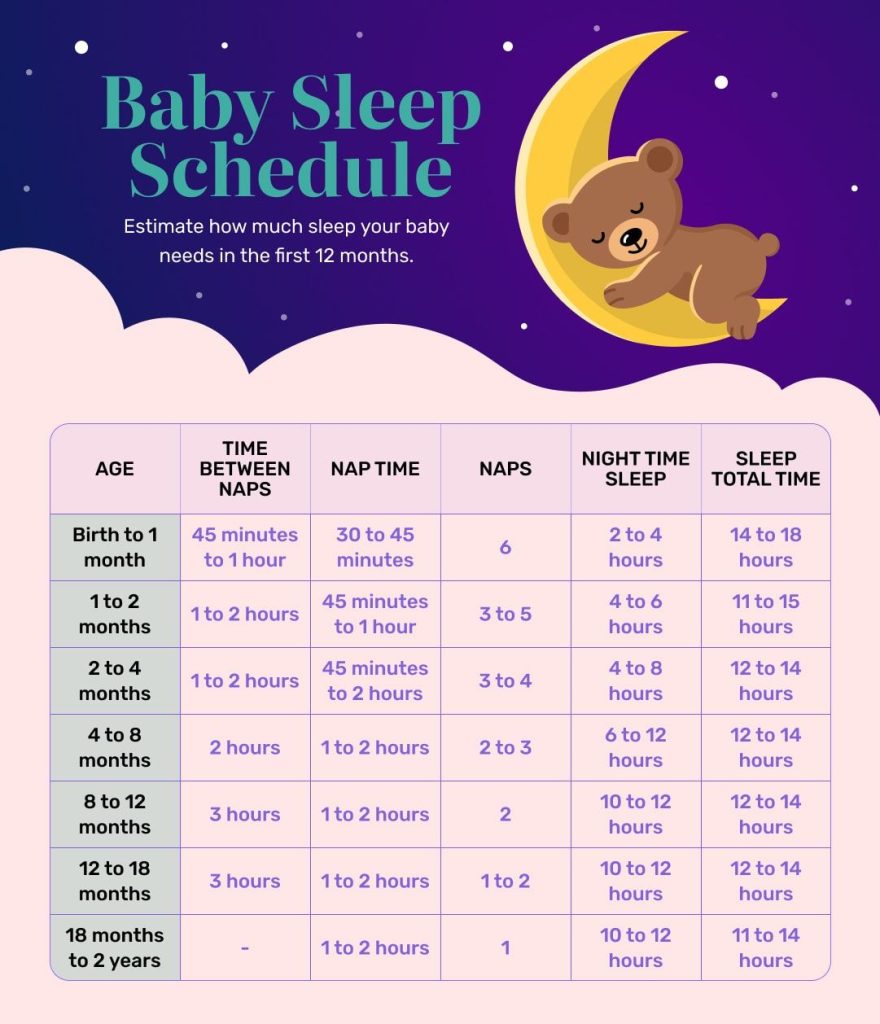The safest sleep position for babies is on their backs. This reduces the risk of Sudden Infant Death Syndrome (SIDS).
Babies need a safe sleep environment for their health and well-being. Placing them on their backs to sleep is crucial for reducing the risk of SIDS. Parents and caregivers should always ensure the baby’s sleep area is free from loose bedding and soft objects.
A firm mattress in a safety-approved crib is ideal. Avoiding overheating by dressing the baby in light sleepwear is also important. Room-sharing without bed-sharing is recommended. These practices create a safer sleep environment, promoting the baby’s safety and parents’ peace of mind. Always consult with a healthcare provider for personalized advice.

Credit: www.enfamil.com
Importance Of Safe Sleep
Ensuring your baby sleeps safely is very important. Safe sleep can save your baby’s life. Proper sleep positions help reduce risks of sudden issues. Understanding these positions promotes healthy growth.
Reducing Sids Risk
Sudden Infant Death Syndrome (SIDS) is a serious concern. Placing babies on their backs greatly reduces SIDS risk. The back sleep position keeps airways clear. It also prevents suffocation.
Babies should always sleep on a firm mattress. Avoid soft bedding, pillows, and toys in the crib. A clutter-free crib is a safer crib.
Promoting Healthy Development
Safe sleep positions help your baby grow strong. Back sleeping supports proper spinal alignment. It also reduces the chances of flat head syndrome. Tummy time during the day is essential for muscle development.
Healthy sleep habits lead to better growth. Babies who sleep well are more alert when awake. Good sleep helps brain development and overall health.

Credit: m.youtube.com
Back Sleeping
Ensuring your baby sleeps safely is crucial. Back sleeping is the best way to reduce risks. Below, we explore why back sleeping is recommended and how to ensure safety.
Why It’s Recommended
Experts recommend back sleeping for babies. It reduces the risk of Sudden Infant Death Syndrome (SIDS). SIDS is a sudden, unexplained death of a healthy baby. The American Academy of Pediatrics advises back sleeping for all babies. This position helps keep the airways clear. Babies can breathe better when on their backs. This position also avoids overheating, which can be dangerous.
How To Ensure Safety
To ensure your baby sleeps safely on their back, follow these tips:
- Use a firm mattress with a fitted sheet.
- Keep the crib free of toys, pillows, and blankets.
- Ensure the room is at a comfortable temperature.
- Place your baby in a sleep sack or swaddle.
- Always place your baby on their back for naps and bedtime.
Below is a table summarizing these safety tips:
| Safety Tip | Details |
|---|---|
| Firm Mattress | Use a firm mattress with a fitted sheet. |
| Empty Crib | Keep the crib free of toys, pillows, and blankets. |
| Room Temperature | Ensure the room is at a comfortable temperature. |
| Sleep Sack or Swaddle | Place your baby in a sleep sack or swaddle. |
| Back Position | Always place your baby on their back for naps and bedtime. |
Following these guidelines helps keep your baby safe. Back sleeping is a simple yet effective way to protect your little one.
Side Sleeping
Parents often wonder about the best sleep positions for their babies. One common position is side sleeping. While it might seem natural, it has its own set of considerations. Let’s dive into the specifics.
Potential Risks
Side sleeping can pose several potential risks for babies. One major concern is the increased risk of Sudden Infant Death Syndrome (SIDS). Babies who sleep on their sides can easily roll onto their stomachs. This can obstruct their airway, making it hard for them to breathe.
Another risk is the development of flat spots on the head. This condition, known as plagiocephaly, occurs when a baby consistently sleeps on one side. It can lead to an uneven head shape.
Side sleeping can also cause positional asphyxia. This happens when a baby’s head tilts too far forward, compressing the windpipe. This can severely restrict their airflow.
When It Might Be Appropriate
Though side sleeping has risks, there are specific times when it might be appropriate. For instance, if a baby has severe reflux, a healthcare provider might recommend side sleeping. This can help reduce the chances of choking on spit-up.
In such cases, using a sleep positioner can keep the baby safely on their side. Always consult with a healthcare professional before making any changes to your baby’s sleep position.
Here is a quick comparison to understand the risks and benefits:
| Aspect | Side Sleeping | Back Sleeping |
|---|---|---|
| Risk of SIDS | High | Low |
| Head Shape | May Cause Flat Spots | Even |
| Reflux Management | Better | Good |
Remember, each baby is unique. Always prioritize their safety and consult professionals for personalized advice.
Tummy Sleeping
Tummy sleeping for babies, also known as prone sleeping, has been a topic of concern among parents and pediatricians. This section will delve into the dangers and exceptions regarding tummy sleeping for infants.
Dangers And Concerns
Placing babies on their tummies to sleep increases the risk of Sudden Infant Death Syndrome (SIDS). Studies show a higher incidence of SIDS in babies who sleep on their stomachs. This position can block airways, making it hard for babies to breathe.
Tummy sleeping can also lead to overheating. Babies may not be able to cool down properly. This increases the risk of SIDS. Rebreathing is another concern. Babies might breathe in their exhaled carbon dioxide. This reduces the oxygen level they get.
| Risks | Details |
|---|---|
| SIDS | Higher risk in tummy sleepers |
| Overheating | Babies can’t cool down well |
| Rebreathing | Breathing in exhaled CO2 |
Exceptions To The Rule
While tummy sleeping is risky, there are exceptions. Some medical conditions may require a different approach. For instance, babies with severe reflux might benefit from tummy sleeping. Always consult with a pediatrician before making such decisions.
Once a baby can roll over, the risk decreases. Babies who can roll over can move to a safer position. Parents should still place babies on their backs to start sleep.
- Consult a doctor for medical conditions.
- Ensure babies can roll over independently.
- Always start with back sleeping.
Tummy time while awake is important. It helps strengthen the baby’s muscles. Always supervise tummy time to ensure safety.
- Supervise awake tummy time.
- Strengthen neck and shoulder muscles.
- Ensure a safe environment.
Sleep Environment
Creating a safe sleep environment for your baby is crucial. It helps reduce the risk of Sudden Infant Death Syndrome (SIDS) and other sleep-related hazards. Below, we explore essential components of a safe sleep environment for babies.
Crib Safety
Ensuring your baby’s crib is safe is the first step. Follow these guidelines:
- Firm Mattress: Use a firm mattress that fits snugly in the crib.
- Fitted Sheet: Only use a fitted sheet designed for the crib’s mattress.
- No Loose Bedding: Avoid pillows, blankets, and stuffed animals in the crib.
- Crib Slats: Ensure the crib slats are no more than 2 3/8 inches apart.
These steps minimize the risk of suffocation and entrapment.
Ideal Room Temperature
Maintaining the right room temperature is important for your baby’s comfort and safety. The ideal room temperature for a baby is between 68°F and 72°F (20°C to 22°C).
| Temperature (°F) | Temperature (°C) |
|---|---|
| 68°F | 20°C |
| 72°F | 22°C |
To monitor the room temperature, use a reliable room thermometer. Ensure the baby is not too hot or too cold. Dress the baby in light clothing for sleep.
Swaddling Tips
Swaddling can help babies sleep better and feel secure. It’s a technique used for centuries to calm infants. Proper swaddling can also reduce the risk of SIDS. Here are some swaddling tips to ensure your baby is safe and comfortable.
Benefits Of Swaddling
- Improves Sleep Quality: Babies sleep longer and more soundly.
- Reduces Startle Reflex: Prevents sudden movements that wake the baby.
- Soothes and Calms: Mimics the feeling of the womb.
- Promotes Back Sleeping: Encourages a safe sleep position.
Safe Swaddling Techniques
Follow these techniques to swaddle your baby safely:
- Use a Lightweight Blanket: Avoid overheating.
- Place the Baby on Their Back: Always sleep babies on their back.
- Ensure Hips Can Move: Leave room for hip movement to avoid hip dysplasia.
- Keep the Blanket Below Shoulders: Ensure the blanket is not too high.
Consider the table below for a quick reference on swaddling dos and don’ts:
| Dos | Don’ts |
|---|---|
| Use a thin, breathable blanket. | Don’t use heavy blankets or quilts. |
| Lay baby on their back to sleep. | Don’t lay baby on their stomach or side. |
| Leave room for hip and leg movement. | Don’t wrap too tightly around hips and legs. |
| Keep the blanket below the baby’s shoulders. | Don’t cover the baby’s face or neck. |
Use Of Sleep Aids
Ensuring the safest sleep positions for babies is a top priority for parents. The use of sleep aids can greatly influence a baby’s sleep safety. This section will discuss the use of pacifiers and the importance of avoiding soft bedding.
Pacifiers And Safety
Pacifiers can be a helpful sleep aid. They are known to reduce the risk of SIDS (Sudden Infant Death Syndrome).
- Always use a one-piece pacifier.
- Ensure the pacifier is clean and in good condition.
- Avoid attaching the pacifier to the baby’s clothes with a string.
- Do not force the baby to take a pacifier.
Avoiding Soft Bedding
Soft bedding can pose a risk to a baby’s safety during sleep. It is important to keep the crib free of soft items.
| Item | Risk Level |
|---|---|
| Blankets | High |
| Pillows | High |
| Stuffed Animals | High |
| Crib Bumpers | High |
Follow these tips to maintain a safe sleeping environment:
- Use a firm mattress.
- Ensure the fitted sheet is tight.
- Keep the crib free of toys and loose items.
- Place the baby to sleep on their back.

Credit: www.woolino.com
Expert Recommendations
Choosing the safest sleep position for your baby is crucial. Experts offer valuable advice to ensure your baby sleeps safely. Here are the top recommendations from pediatricians and the American Academy of Pediatrics.
Pediatrician Advice
Pediatricians recommend placing babies on their backs to sleep. This position reduces the risk of Sudden Infant Death Syndrome (SIDS). Never place your baby on their stomach or side to sleep. These positions increase the risk of SIDS.
Use a firm sleep surface like a crib mattress. Avoid soft bedding, pillows, or toys in the crib. Keep the crib free of loose items to prevent suffocation.
- Always place baby on their back
- Use a firm mattress
- Keep the crib free of loose items
American Academy Of Pediatrics Guidelines
The American Academy of Pediatrics (AAP) provides clear guidelines. They stress the importance of the back-sleeping position. This position is the safest for babies up to one year old.
Room-sharing without bed-sharing is another key guideline. Place your baby’s crib in your room for the first six months. This setup allows for easier monitoring and feeding.
| Guideline | Details |
|---|---|
| Back-Sleeping Position | Safest for babies up to one year old |
| Room-Sharing | Keep baby’s crib in your room for the first six months |
| Avoid Soft Bedding | Use a firm mattress and avoid pillows and toys |
Follow these expert recommendations to ensure your baby sleeps safely. Proper sleep positioning can significantly reduce the risk of SIDS.
Frequently Asked Questions
What Is The Safest Position For An Infant To Sleep?
The safest position for an infant to sleep is on their back. This reduces the risk of SIDS. Always use a firm mattress and avoid loose bedding.
What Is The Safest Way For A Baby To Sleep On Their Side?
Babies should sleep on their backs to reduce SIDS risk. Side sleeping is not recommended for infants.
Is Side Lying Position Safe For Newborns?
Side lying position for newborns is not recommended due to the risk of SIDS. Always place babies on their backs.
What Is The Best Position For A Baby To Sleep Prone?
Babies should sleep on their backs, not prone. This reduces the risk of Sudden Infant Death Syndrome (SIDS).
What Is The Best Sleep Position For Babies?
The safest sleep position for babies is on their backs.
Conclusion
Ensuring your baby sleeps safely is crucial for their health. Always place your baby on their back. Avoid soft bedding and stuffed toys in the crib. Following these guidelines can greatly reduce the risk of SIDS. Prioritize safe sleep practices for a healthier baby and peace of mind.


